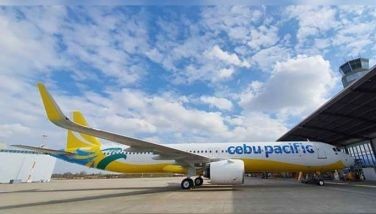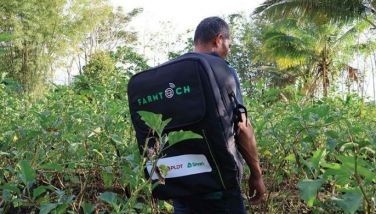Interoperable QR code standard for Asean pushed
MANILA, Philippines — The Bangko Sentral ng Pilipinas (BSP) is ramping up efforts to achieve a cash-lite economy as it pursues an interoperable QR (quick response) code in Southeast Asia.
BSP Governor Benjamin Diokno said the central bank is working with its counterparts in the Association of Southeast Asian (ASEAN) particularly Bank of Indonesia and Bank of Thailand for an interoperable QR code to benefit 620 million people.
“We are planning to have an interoperable QR system within the region so that is about 620 million who will benefit from that,” Diokno told members of the Management Association of the Philippines (MAP).
“Soon,” he replied when asked about the timeframe for the interoperable QR code standard in the region.
The BSP chief said he expects 50 percent of total transactions in the country done through electronic means when he completes his term in the middle of 2023.
“The Philippines will be cash-lite rather than cash heavy so that 50 percent of the transactions will be done online or through QR codes,” he said.
The use of QR codes for payments has been gaining traction as an alternative to the traditional debit and credit card payments. Consumers benefit having faster, easier and cheaper payment options with greater convenience.
The QR technology has emerged as the most expedient means of payment since it essentially entails code scanning which is faster and easier to do than bringing out a card, tapping, dipping or swiping it, and signing a charge slip in most cases.
Last November, the BSP and the Philippine Payments Management Inc. (PPMI) launched the National QR code standard or QR Ph as well as the government electronic-payments (EGov Pay) facility.
The BSP launched the National Retail Payment System (NRPS) in December 2015 to raise the share of digital transactions to 20 percent by 2020, paving the way for seamless cash transfers through automated clearing houses including PESONet and InstaPay.
The EGov Pay facility provides a payment solution that enables a streamlined digitalization of government collections and disbursements.
Latest data from the United Nations’ Better Than Cash Alliance (BTCA) showed the share of online transactions has increased to 10 percent in 2018 from only one percent in 2013 in terms of volume and to 20 percent from eight percent in terms of value.
As part of its financial inclusion efforts, Diokno said the BSP intends to double the number of Filipinos with formal bank accounts to 70 percent by 2023 from the current 35 percent.
Data released by the World Bank showed only 34.5 percent of Filipinos 15 years old and above have a formal bank account. This was 3.2 percentage points higher compared to the 31.3 percent booked in 2014.
“By the time I step down, 70 percent of all Filipinos will have their own individual bank accounts. So I am committed to two things price stability and lower unemployment,” the BSP chief added.
- Latest
- Trending





























